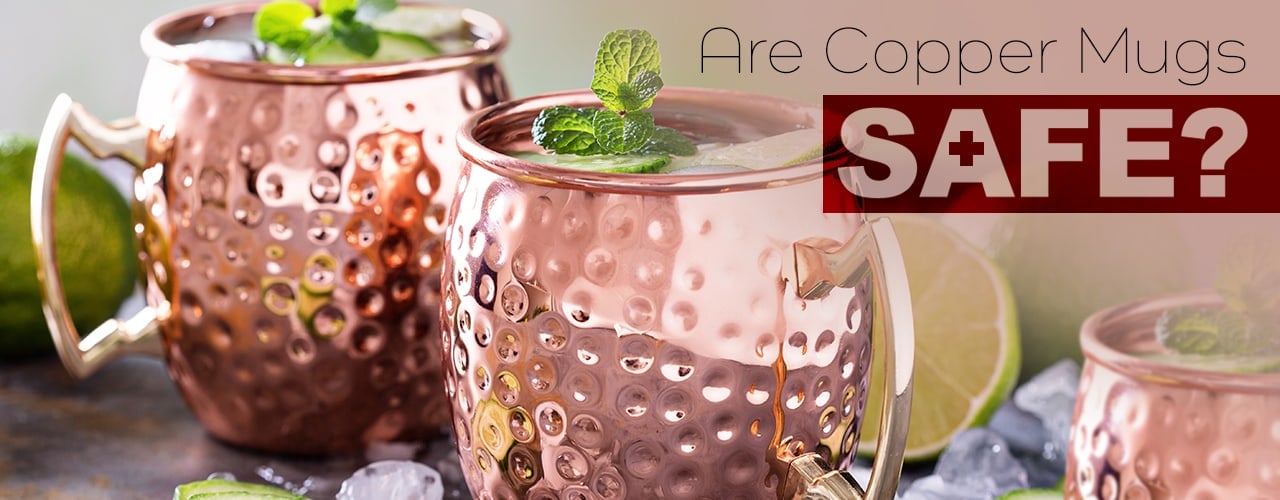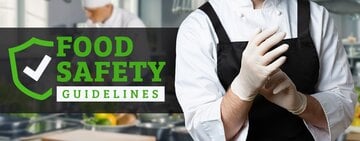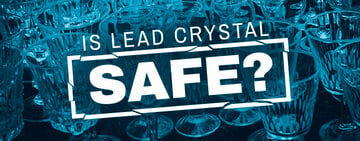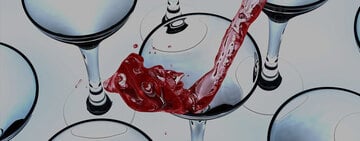While copper mugs are generally safe to drink from, there are some concerns you might want to keep in mind when serving drinks like the classic Moscow Mule in them. While pure copper can react with acidic liquids, leading to potential overexposure, most commercial copper mugs today are lined with food-safe materials like stainless steel or nickel to prevent leaching. Below, we’ll show exactly how to use copper mugs safely in your bar or restaurant, keeping your customers happy and your operations compliant.
Shop All Moscow Mule MugsLined vs Unlined Copper Mugs

Many copper mugs that you will find are copper-plated over stainless steel, nickel, or tin, meaning they are lined with those materials. While copper toxicity is not likely for the Moscow Mule lover drinking out of a pure, unlined copper mug, it is impossible to rule out the potential. As a result, some bar owners might prefer to stock up on lined copper mugs for easier upkeep, fewer health concerns, or to comply with state regulations on lined copper mug use.
Is It Safe to Drink Out of Unlined Copper Mugs?
Unlined copper mugs are generally safe to drink out of, as copper toxicity is highly unlikely. According to a study done by the National Research Council (US) Committee, copper toxicity symptoms only occurred after ingesting 30 milligrams of copper per liter that had been sitting in an unlined, pure copper mug for hours. This means that a guest would need to consume a liter’s worth of Moscow Mules that had been sitting in an unlined copper mug for several hours before copper poisoning is a possibility.
Why Did Iowa Ban Unlined Copper Mugs?
Iowa banned unlined copper mugs in accordance with the FDA's suggestion. The FDA asserts that copper may leach from an unlined copper mug into food and beverage that has a pH lower than 6. As such, the FDA suggests that establishments do not allow copper to contact food and drink with that acidity level. A Moscow Mule falls under this category because lime juice and ginger beer both have a pH lower than 6.
Safety concerns regarding the copper mug were raised when the Iowa Alcoholic Beverage Division issued an advisory bulletin in July of 2017. In this report, the Division notified the public that Iowa would no longer serve cocktails in unlined copper mugs based on the FDA’s stance. However, many states allow unlined copper cup use in bars. Be sure to check with your state regulations to see which type of copper mug to use.
Copper Mug Safety

Copper mugs add a unique aesthetic to cocktails like the Moscow Mule, but proper handling is key to ensuring they’re used safely in your bar or restaurant. While lined copper mugs significantly reduce risks, unlined copper can react with certain liquids, potentially leading to excessive copper exposure. To eliminate any safety concerns, follow these essential best practices:
- Avoid Overly Acidic Drinks: Highly acidic beverages can accelerate copper leaching in unlined mugs. Stick to drinks with moderate acidity or use lined copper mugs for added safety.
- Don’t Let Drinks Sit for Long Periods: Prolonged contact between liquids and copper increases the risk of leaching. Serve drinks immediately and discourage customers from leaving beverages in copper mugs for extended times.
- Limit Excessive Use of Copper Mugs: While occasional use poses minimal risk, frequent consumption from unlined copper mugs may lead to copper buildup in the body. Rotate glassware or encourage lined copper options for regular service.
- Clean and Maintain Mugs Properly: Hand wash copper mugs with mild soap and avoid abrasive scrubbers to preserve their lining. Regularly polishing and maintaining copper mugs prevents tarnish and ensures no residue affects drink safety.
Copper Mug Safety FAQ
Below we answer some of the most common questions regarding copper mug safety:
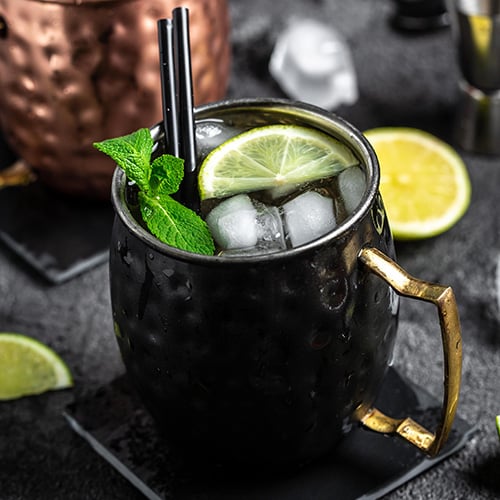
Is Drinking Water from Copper Cups Dangerous?
Drinking water from copper cups is generally safe in moderation, but prolonged use of unlined copper vessels can lead to excessive copper intake, which may pose health risks. Carbonated water accelerates copper leaching, making lined copper cups a safer choice for regular service.
Can You Drink Out of a Tarnished Copper Cup?
While tarnished copper cups aren’t inherently toxic, the oxidation layer can harbor bacteria and affect drink quality, making them unsuitable for foodservice use. Tarnish forms when copper reacts with moisture and air, creating a patina that may alter flavors and raise hygiene concerns.
For safe operation, regularly polish tarnished mugs with copper-safe cleaners or opt for lined cups that resist oxidation while maintaining a polished appearance for guests. Always prioritize cleanliness and inspect copperware before serving to ensure both safety and presentation meet industry standards.
Are Copper Mugs Safe for Hot Drinks?
Using copper mugs for hot beverages isn't recommended, as heat accelerates copper leaching. This is especially true with unlined cups, potentially exposing customers to unsafe metal levels. While lined copper mugs provide some protection, the high temperatures of coffee, tea, or hot cocktails can still compromise the lining over time.
For hot drink service, opt for other types of cocktail glasses that maintain temperature without safety concerns, reserving copper mugs exclusively for cold cocktails where they perform best. Always check manufacturer guidelines to ensure your drinkware meets safety standards for its intended use.
Copper mugs can elevate your beverage presentation when used thoughtfully, but their safety hinges on proper selection and handling. Whether serving classic cocktails or exploring new drink concepts, you should let informed practices guide your use of copper. With these precautions in place, you can confidently incorporate copper drinkware into your service, delivering memorable experiences without compromising on safety or quality.
